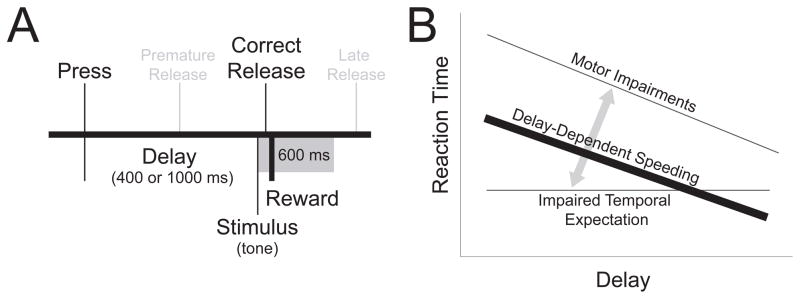Figure 1.

The simple reaction time task measures temporal expectation. (A) In the simple reaction time task, animals were trained to press and hold a lever until the onset of a tone (stimulus) at which point a lever release was rewarded with water (correct release). If lever release occurred prior to the stimulus onset (premature release) or greater than 600 ms after tone offset (late release), no reward was delivered. Following initial training with a 1000 ms fixed interval, animals were trained in a two-delay task (short delay - 400 ms, long delay - 1000 ms). (B) Schematic representation of delay-dependent speeding measured by reaction time (thick black line). The longer the delay, the more time the subject has to prepare to respond, leading to faster reaction times. When the delay is short and unexpected, the subject has less time to prepare for their response and correspondingly exhibit a slower reaction time. With motor impairments, reaction times are slower at both short and long delays. With impaired temporal expectation, reaction times do not change with increasing delay length. For a detailed discussion of this model, see Smith et al., 2010.
